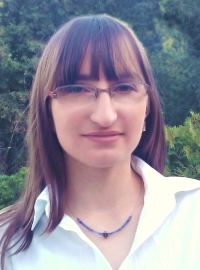 Elena Anovska Jovcheva received her Bachelors degree in Computer Science from the Faculty of Electrical Engineering at the ‘Ss. Cyril and Methodius University’, Skopje, Republic of Macedonia and has successfully passed her MPhil viva at the Wessex Institute of Technology with a thesis entitled “Application of the Boundary Element Method Multi-Domain Approach and Simulation of Tritium Concentration to Determining the Properties of the Galichica Mountain Aquifer”. The external examiner was Prof. Luiz Wrobel from the University of Brunel, and the internal examiner was Dr Andres Peratta.
Elena Anovska Jovcheva received her Bachelors degree in Computer Science from the Faculty of Electrical Engineering at the ‘Ss. Cyril and Methodius University’, Skopje, Republic of Macedonia and has successfully passed her MPhil viva at the Wessex Institute of Technology with a thesis entitled “Application of the Boundary Element Method Multi-Domain Approach and Simulation of Tritium Concentration to Determining the Properties of the Galichica Mountain Aquifer”. The external examiner was Prof. Luiz Wrobel from the University of Brunel, and the internal examiner was Dr Andres Peratta.Prespa and Ohrid Lake region is one of the oldest water basins in the world. It is located in the South-Eastern part of Europe, on the Balkan Peninsula, and its territory is shared between Republic of Macedonia, Albania and Greece.
Throughout recent years, the water level of the Prespa Lake has been decreasing rapidly. There are several assumptions about the possible reasons that cause this phenomenon such as the human factor, climate change, natural processes etc., but none have been proved. This gave the possibilities for different research activities to be investigated including the water balance, carrying out tracer experiments and computing flow through porous media.
In order to understand better the water flow through Galichica Mountain in the Ohrid and Prespa region, two numerical models were adapted and applied.
With the first computer program, nuclear related techniques were used according to the geological conditions and hydro-geological characteristics of the Prespa-Ohrid Region. The observed Tritium concentration in local precipitations, Prespa Lake water and spring water of St Naum, together with the Mean Residence Time that the water stays in the Galichica Mountain reservoir, as well as the volume of that reservoir has been determined.
The advanced approach based on the Boundary Element Method (BEM) in a multi domain system with a free surface time dependent moving boundary was implemented in the second computer program that computed the water level, velocity and the normal derivative of the underground water flow from Prespa Lake through Galichica Mountain reaching Ohrid Lake.
The computer programs can be used in a wide range of similar case studies.
As a result of her research, both examiners recommended that Elena be awarded the degree of Master of Philosophy.

 Wessex Institute
Wessex Institute